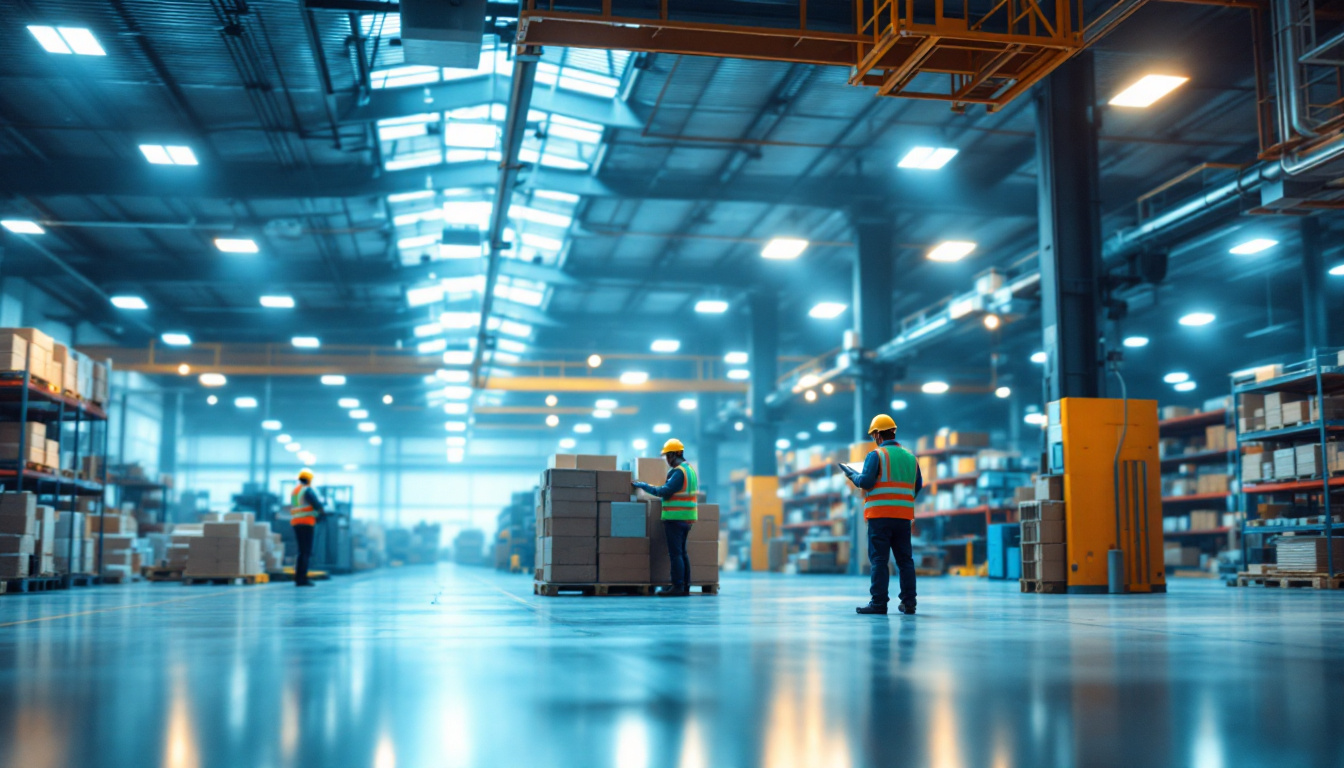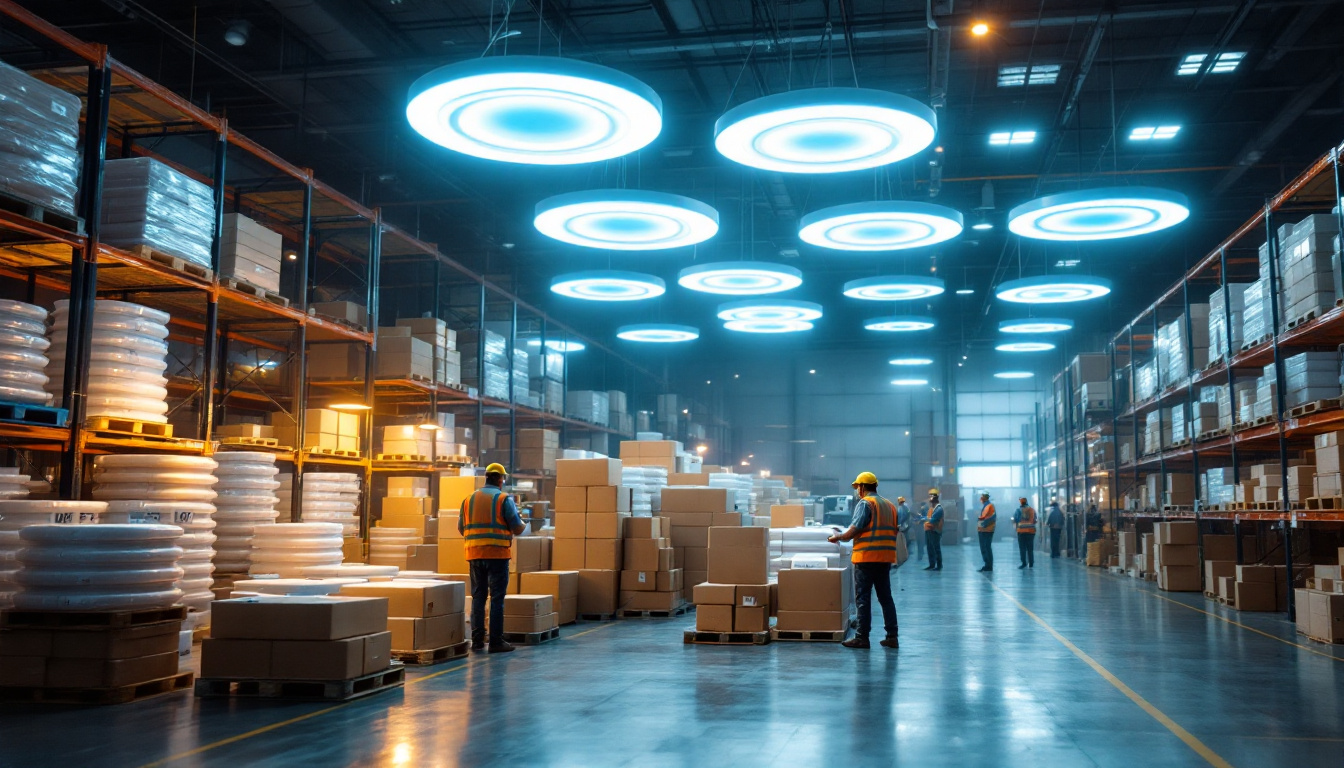

In the realm of industrial operations, effective lighting is often an overlooked aspect that plays a crucial role in enhancing productivity and safety. For lighting contractors, understanding the nuances of industrial warehouse lighting can lead to significant opportunities for profit and client satisfaction. Proper lighting not only illuminates the workspace but also influences employee morale, operational efficiency, and even energy costs.
With the right lighting solutions, warehouses can become safer and more efficient environments. This guide aims to equip lighting contractors with the knowledge needed to recommend and implement the most effective lighting systems for industrial warehouses, ultimately boosting profits and improving client relationships.
The relationship between lighting and productivity is well-documented. In an industrial setting, adequate lighting can reduce eye strain, enhance focus, and minimize errors. Employees working in well-lit environments are more likely to perform tasks efficiently, leading to increased output and reduced downtime.
Moreover, the right lighting can help in delineating work areas, making it easier for employees to navigate through the warehouse. This clarity not only aids in productivity but also fosters a safer workplace, reducing the likelihood of accidents caused by poor visibility. Additionally, research has shown that natural light can further enhance productivity levels. Incorporating skylights or large windows can provide a more pleasant working atmosphere, which can lead to improved employee satisfaction and retention.
Safety is paramount in any industrial setting. Poor lighting can lead to accidents, injuries, and even fatalities. By ensuring that warehouses are well-lit, lighting contractors can help mitigate these risks. Adequate lighting in high-traffic areas, loading docks, and storage zones is essential for maintaining a safe working environment.
Furthermore, utilizing motion sensors and strategically placed fixtures can enhance safety measures. These technologies ensure that areas are illuminated as needed, reducing energy waste while maintaining safety standards. The integration of LED lighting systems can also contribute to safety; they not only provide bright, consistent light but also have a longer lifespan and lower heat output, reducing the risk of fire hazards. Regular maintenance and the timely replacement of burnt-out bulbs are crucial to ensure that lighting systems remain effective and that safety is never compromised.
When it comes to industrial warehouse lighting, several types of lighting solutions are available, each with its own set of advantages and applications. Understanding these options allows lighting contractors to tailor solutions to meet the specific needs of their clients.
LED lighting has emerged as a leading choice for industrial warehouses due to its energy efficiency, longevity, and low maintenance costs. Unlike traditional lighting options, LEDs consume significantly less energy while providing brighter illumination. This not only reduces operational costs but also contributes to a more sustainable environment.
Moreover, the lifespan of LED fixtures often exceeds that of traditional bulbs, resulting in fewer replacements and reduced labor costs for maintenance. The initial investment in LED technology can lead to substantial long-term savings, making it an appealing choice for warehouse owners. Additionally, LEDs offer versatility in design, with options for adjustable color temperatures and smart lighting controls, allowing for customized lighting solutions that can adapt to various tasks and areas within the warehouse. This adaptability can enhance productivity and safety, as workers can benefit from optimal lighting conditions tailored to their specific needs.
HID lighting, including metal halide and high-pressure sodium lamps, has been a staple in industrial lighting for years. These fixtures are known for their ability to produce intense light, making them suitable for large spaces with high ceilings.
While HID lights are effective, they do come with some drawbacks, such as longer warm-up times and shorter lifespans compared to LEDs. However, they can still be a viable option for certain warehouse applications, particularly where initial costs are a primary concern. Furthermore, HID lighting is often favored in environments where high levels of illumination are necessary, such as loading docks or areas requiring detailed inspections. The color rendering capabilities of metal halide lamps can also be beneficial in settings where accurate color differentiation is crucial, such as in warehouses storing various colored products.
Fluorescent lighting is another option that is commonly used in warehouses. It offers good energy efficiency and a decent lifespan, making it a cost-effective solution for many facilities. However, fluorescent lights may not provide the same level of brightness as LEDs and can flicker, which might lead to discomfort for workers.
Despite these limitations, fluorescent lights can still be beneficial when used in conjunction with other lighting types to create a well-rounded lighting strategy. For instance, they can be effectively deployed in areas where lower light levels are acceptable, such as storage aisles or less-frequented zones of the warehouse. Additionally, advancements in fluorescent technology, such as high-output and compact fluorescent options, have improved their performance, making them a suitable choice for specific applications. Moreover, the ability to easily integrate fluorescent fixtures into existing lighting systems can help warehouse managers transition to more energy-efficient solutions without incurring significant upfront costs.
When designing a lighting solution for an industrial warehouse, several key considerations must be taken into account. These factors can significantly influence the effectiveness and efficiency of the lighting system.
The layout of the warehouse plays a critical role in determining the type and placement of lighting fixtures. Understanding the workflow, storage areas, and high-traffic zones is essential for creating an effective lighting design. Lighting contractors should conduct a thorough assessment of the space to identify the best locations for fixtures.
Additionally, the height of the ceilings and the type of activities performed in different areas will influence the choice of lighting technology. For instance, areas requiring high visibility may benefit from brighter LED fixtures, while less critical zones can utilize lower-intensity options.
As energy costs continue to rise, clients are increasingly seeking lighting solutions that are both energy-efficient and sustainable. Lighting contractors should be well-versed in the latest technologies and practices that promote energy savings. This includes recommending LED fixtures, daylight harvesting systems, and smart lighting controls.
Implementing energy-efficient lighting not only reduces operational costs but also enhances the overall sustainability of the warehouse. Many clients are looking to improve their corporate social responsibility (CSR) profiles, making energy-efficient lighting solutions a compelling selling point.
Lighting contractors must also be aware of local regulations and industry standards regarding warehouse lighting. Compliance with safety and performance standards is essential for ensuring that installations meet legal requirements and provide a safe working environment.
Familiarity with regulations such as the Occupational Safety and Health Administration (OSHA) standards can help contractors guide their clients in making informed decisions about lighting solutions. This knowledge can also serve as a valuable differentiator in a competitive market.
Smart lighting technology is revolutionizing the way warehouses are illuminated. By integrating advanced controls and sensors, lighting contractors can offer clients solutions that enhance efficiency, reduce costs, and improve overall operational effectiveness.
Motion sensors are a key component of smart lighting systems. These devices detect movement and automatically adjust lighting levels based on occupancy. In warehouses, this can lead to significant energy savings, as lights are only activated when needed.
Additionally, motion sensors can enhance safety by ensuring that high-traffic areas are well-lit when employees are present, reducing the risk of accidents in dimly lit zones.
Daylight harvesting involves utilizing natural light to supplement artificial lighting in warehouses. By installing skylights or large windows and using sensors to adjust artificial lighting levels based on available daylight, contractors can create a more energy-efficient lighting system.
This approach not only reduces energy consumption but also creates a more pleasant working environment for employees. Natural light has been shown to improve mood and productivity, making it a valuable addition to any warehouse lighting strategy.
Remote control systems allow warehouse managers to monitor and adjust lighting levels from a central location. This capability can lead to increased efficiency and easier management of lighting schedules, particularly in large facilities with multiple zones.
By leveraging technology, lighting contractors can provide clients with solutions that enhance operational efficiency and reduce energy costs, ultimately leading to increased profitability.
For lighting contractors, demonstrating the return on investment (ROI) for lighting upgrades is essential for convincing clients to make changes. A well-calculated ROI can highlight the financial benefits of investing in modern lighting solutions.
While the initial costs of upgrading to energy-efficient lighting may seem high, the long-term savings often outweigh these expenses. Factors such as reduced energy bills, lower maintenance costs, and increased productivity should all be considered when calculating ROI.
Contractors should provide clients with detailed projections that outline potential savings over time, helping them understand the financial benefits of their investment.
Sharing case studies and success stories can be an effective way to illustrate the benefits of upgraded lighting systems. Highlighting real-world examples of warehouses that have successfully implemented new lighting solutions can provide tangible evidence of the positive impact on productivity and safety.
These stories can serve as powerful testimonials, helping to build trust and credibility with potential clients.
In conclusion, industrial warehouse lighting is a critical component that can significantly influence operational efficiency, safety, and profitability. For lighting contractors, understanding the various lighting solutions, considerations, and technologies available is essential to providing clients with the best possible recommendations.
By focusing on energy efficiency, compliance, and the implementation of smart lighting solutions, contractors can not only enhance their clients’ operations but also boost their own profits. As the demand for sustainable and efficient lighting solutions continues to grow, lighting contractors who stay informed and proactive will be well-positioned to succeed in this evolving industry.
Ultimately, investing in the right lighting solutions is not just about illuminating a space; it’s about creating a safer, more productive, and profitable environment for industrial operations.
Ready to elevate your lighting projects and outshine the competition? Choose LumenWholesale for your next industrial warehouse lighting endeavor. Our commitment to providing contractors with superior, spec-grade lighting products at unbeatable wholesale prices ensures that you can deliver top-notch solutions to your clients. With LumenWholesale, you’ll experience the ease of bulk purchasing coupled with the benefits of free shipping, making your projects more profitable and your processes more efficient. Don’t let inflated markups dim your potential; discover the best value in wholesale lighting and join the ranks of satisfied contractors who trust LumenWholesale for their lighting needs.

Discover how LED lighting solutions can transform your warehouse into an energy-efficient powerhouse.

Discover how industrial dining lights can transform your space with their unique blend of style and functionality.

Discover the essential insights lighting contractors need to know about shop lights LED technology.

Discover why purchasing round UFO high bay lights in bulk from local distributors might not be your best bet.
Get notified when NEW deals are released.
Optimize your budget with wholesale discounts.
Only top-quality, specification-grade lighting products.
No additional costs at checkout - what you see is what you pay.
We understand the unique needs of contractors.